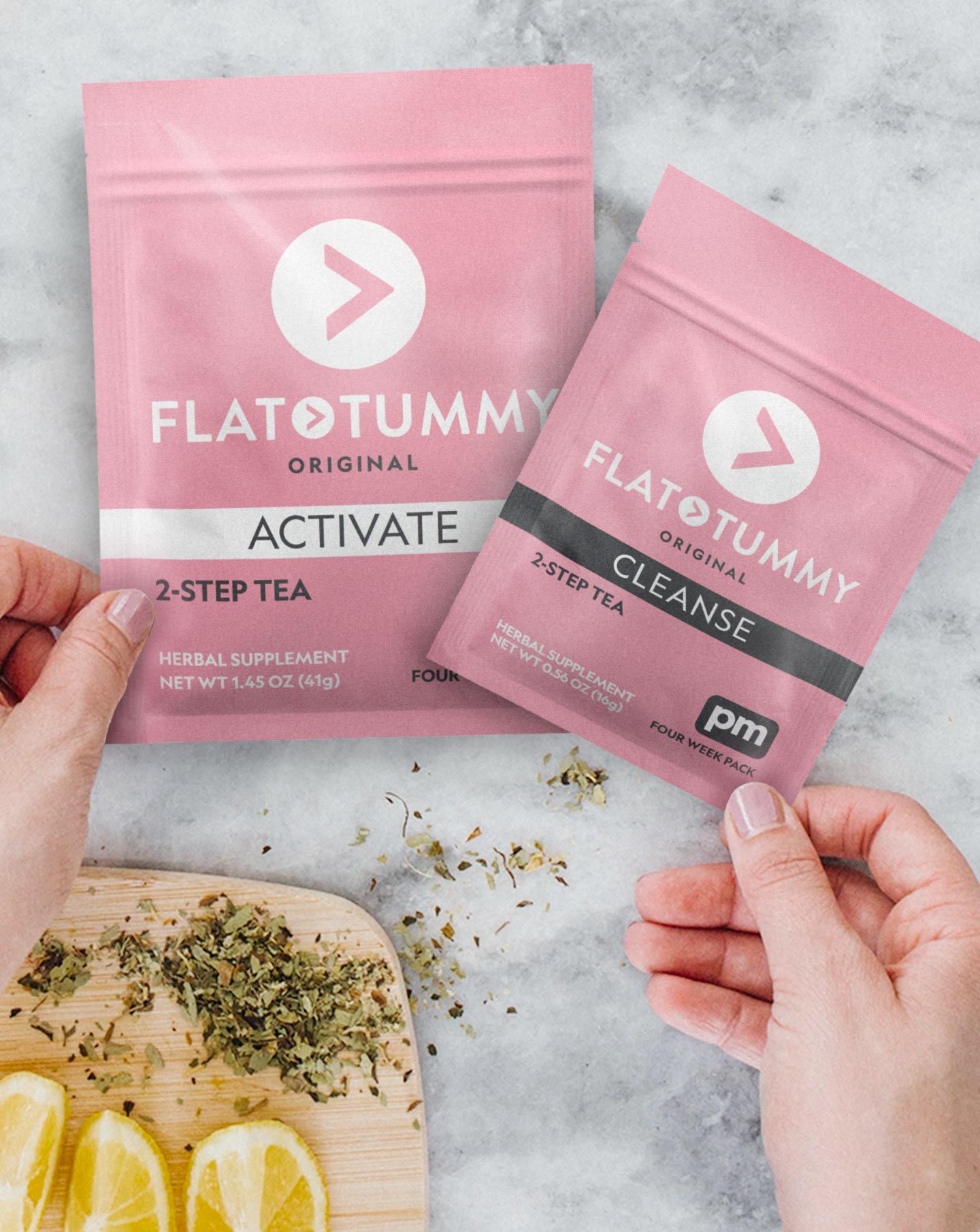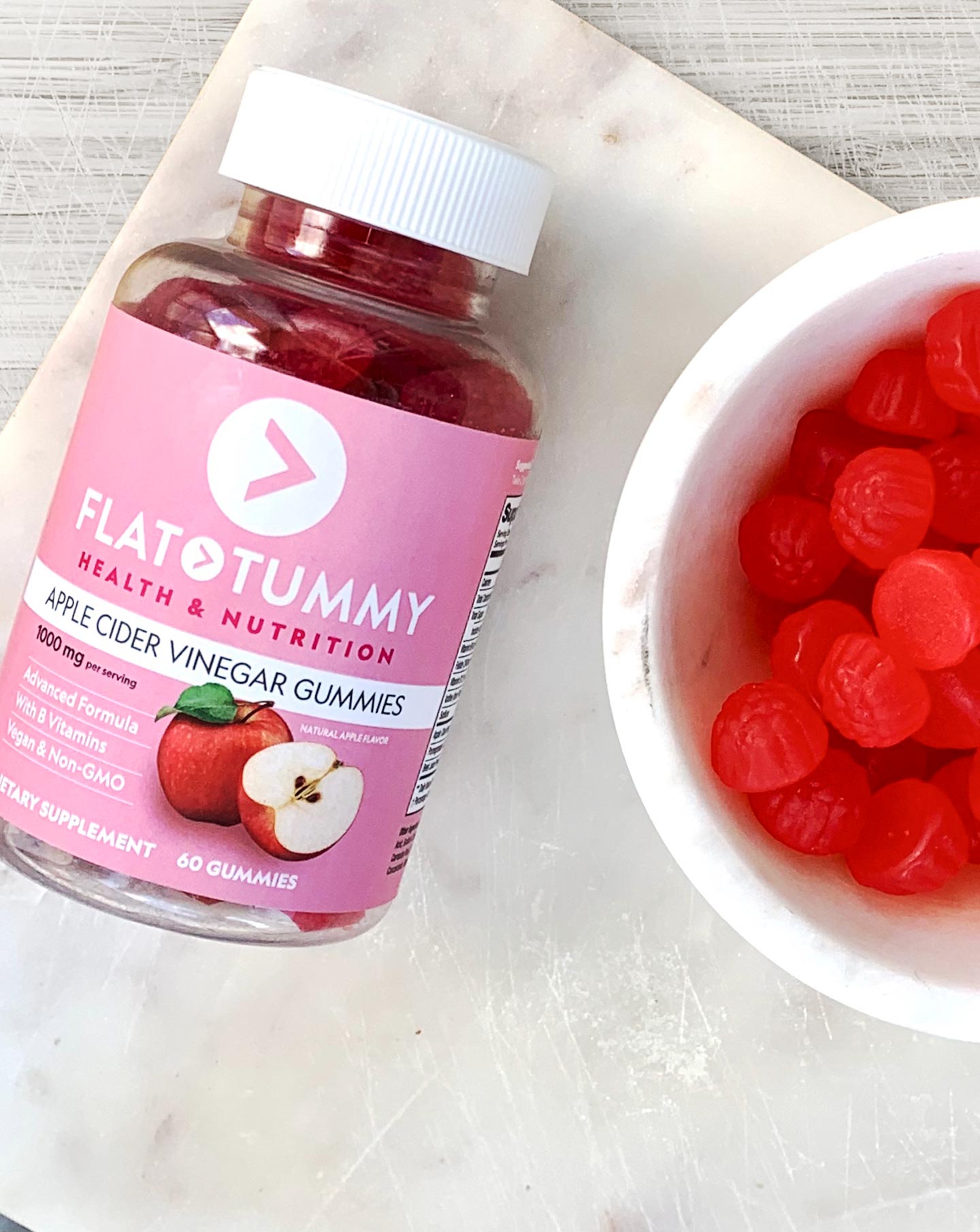‘Beating the Bloat’ nutritiously, with Tess Oddie
Posted by Valentina from Flat Tummy Co on
by Tess Oddie, The Nutritionist Hobart, thenutritionisthobart.com.au
Bloating: the sensation of increased pressure within the abdomen.
As a nutritionist, I am constantly being asked to help people suffering from bloating and gut discomfort. Irritable Bowel Syndrome (IBS) and bloating in general seems to affect an enormous number of people, especially women. Suffering from this is not only painful and upsetting, but can also cause embarrassment and social discomfort. Constantly tensing the abdominal muscles to hold the tummy in alongside frequent toilet visits isn’t a pleasant way to live.
I can say this speaking from experience. I got my first job when I was 14 in a local bakery. As I often did the closing shift after school, I could take my pick of the left overs at the end of the day. This resulted in bags of Danish pastries, scrolls, pies, muffins and all sorts of loaves of bread being taken home to the family, so my ingestion of processed flour and gluten skyrocketed. After some time I was struggling to focus in class, would often take powernaps or fall asleep at my desk and usually have a nap as soon as I got home until dinner. My gut always felt bloated and would frequently make me double over in pain before rushing to the toilet.
Visits to the doctor resulted in the diagnosis of IBS and I turned to a naturopath to help give my diet an overhaul and allow my gut to heal (please note IBS is a SYNDROME not a disease, it is not a permanent state and can be reversed). I cut out gluten and dairy for six weeks and started eating more wholesome, less processed foods. After the six weeks I introduced dairy and wheat back in, but in much smaller amounts. This changed the way I saw food and the choices I made, and thankfully, I’ve never been in as much pain since. However, bouts of bloating have still frustratingly popped up now and then, until I learned how to keep it under wraps.
Many things can be going on at once to cause bloating and discomfort. Stress, anxiety, food sensitivities or intolerances, over eating, an unbalanced diet, nutrient deficiencies, lack of exercise, hormonal imbalances and poor gut health, to name a few.
Without going into detail, it is important to address all the above factors and learn to take a chill pill. Although being bloated is stressful and uncomfortable, agonising over all the possible solutions may just make the symptoms worse by increasing anxiety levels. Find time to put your feet up and do whatever it is that relaxes your nerves.

A great way to start is to sit back and relax with a cup of herbal tea. Active medicinal herbs, such as peppermint, dandelion, liquorice and fennel, can work wonders on gastrointestinal health. I have had the pleasure of sampling some of Flat Tummy Tea’s Everyday Blend, which contains all the above-mentioned herbs and many more. Each herb in this unique blend has specific medicinal properties that aid digestion, in order to ease discomfort and prevent gas. It has a beautiful refreshing, delicate flavour and you can even re-use one spoonful up to three times! So if you haven’t already, go pop the kettle on, make a cuppa and read these three top tips for beating the bloat nutritiously.
Chew on something bitter.
Bitter foods improve digestion and limit bloating by stimulating the release of digestive juices, bile and enzymes ready for when the food arrives. Chewing such foods slowly and thoroughly enhances this, and the more you eat them, the more you crave and enjoy healthier foods. Win! Some bitter foods include: radicchio, endive (or witlof), lettuces, grapefruit, silver beet, thistles, kale, daikon, arugula, raw cacao, dandelion, sesame, eggplant, walnuts, turmeric, cumin and dill.
TIP: branch out from the standard iceberg, cucumber and tomato salad and try a bitter salad to accompany your meal instead. I like combining sliced grapefruit, radicchio leaves, finely sliced fennel, endive, walnuts, olive oil and lemon juice together. It looks beautiful and tastes amazing!
Keep up the fibre.
Make sure you’re getting enough fibre from good sources, such as seeds, leafy greens, fruit and whole grains. Fibre, along with plenty of water, keeps you regular and cleans out your bowels. This regular movement prevents stagnancy and over-fermentation of undigested food (which causes gas and bloating), whilst also promoting an optimal environment for beneficial bacteria to thrive.
TIP: have a seed mix on hand to munch on between meals and keep cravings and hunger at bay (I have a mixed bag of pumpkin seeds, sunflower seeds, raw buckwheat, almonds/walnuts and goji berries in my handbag at all times). This mix also contains essential fatty acids and antioxidants that help with inflammation and improve skin and hair quality.
Eat LIVE food.
Increase your intake of living, fermented foods to promote the growth of the beneficial bacteria. This can include miso soup, yoghurt, kefir, kombucha, sauerkraut and other fermented vegetables. Fermented foods seem to have been forgotten about in modern Western times, with refrigeration, added convenience and a strong focus on sterilisation and food safety. Yoghurt has remained popular, but there is huge variation between products. Many on the market contain high levels of sugar, low levels of good bacteria and are pretty much just a dessert.
TIP: opt for natural yoghurts (i.e. with no added sugar or artificial sweeteners) that are well within their best before date (bacterial numbers decline close to the end date so although the product is perfectly safe to eat, the health benefits are reduced). Make sure they contain a few strains of beneficial bacteria (i.e. acidophilus, bifidus, casein, thermophilus). Pot-set varieties are great, as they are the least disturbed and are naturally fermented.
Turnip Kimchi Recipe
For those who haven’t tried fermented vegetables, give this recipe for turnip kimchi a go. Turnips are easy to digest, ginger soothes the digestive tract and reduces gas, chilli stimulates the metabolism and the good bacteria promotes optimal gut health and digestion, making turnip kimchi an anti-bloating powerhouse!
This recipe is of medium heat (I don’t like my kimchi fiery hot as it is traditionally meant to be), so you can just adjust the chilli content to your personal taste.
It’s really easy and cheap to prepare and makes a great condiment or pre-dinner snack. Serve on top of fish steamed with lemon alongside a bitter salad to get your digestive juices flowing and your bowels in tip top shape.

- 1kg turnips, peeled and diced
- 1 tablespoon coarse sea salt
- 1 tablespoon raw sugar (to feed the bacteria)
- 1 tablespoon fresh ginger, finely chopped
- 3-4 cloves garlic, finely chopped
- 6 spring onions, chopped into 1-2cm lengths on an angle
- 1 teaspoon fish sauce
- 2 teaspoons chilli flakes
- 3 teaspoons hot chilli powder
METHOD: In a large bowl, toss the turnip with the salt so it is well coated. Leave to sit for approximately 30 minutes to draw excess fluid from the turnip. Transfer to a colander and drain well. Return to the bowl and mix all remaining ingredients in gently. Fill sterilised glass jars with the mixture and press down with a spoon so it is nice and compact. Fasten with a lid and leave to ferment in room temperature for two days. Transfer to the fridge and let it further ferment slowly for two weeks. This allows the bacteria to grow and lets the kimchi develop a sour, tangy flavour.
Enjoy!
-
 50% OFF#1 Original Detox TeaCleanse & Debloat
50% OFF#1 Original Detox TeaCleanse & Debloat
100%
Natural
4.6 Star
Rating
Boost
Metabolism -
 50% OFFFlat Tummy ShakesCut the Cals*Clinically Studied
50% OFFFlat Tummy ShakesCut the Cals*Clinically Studied
70+ Fruits, Veggies
& Vitamins
20g of Vegan
Protein
+ 2250mg of
Super Citrimax -
 50% OFFACV GummiesSupport Weight Management
50% OFFACV GummiesSupport Weight Management
Vegan
Friendly
Helps Reduce
Appetite*
Supports Gut
Health*






